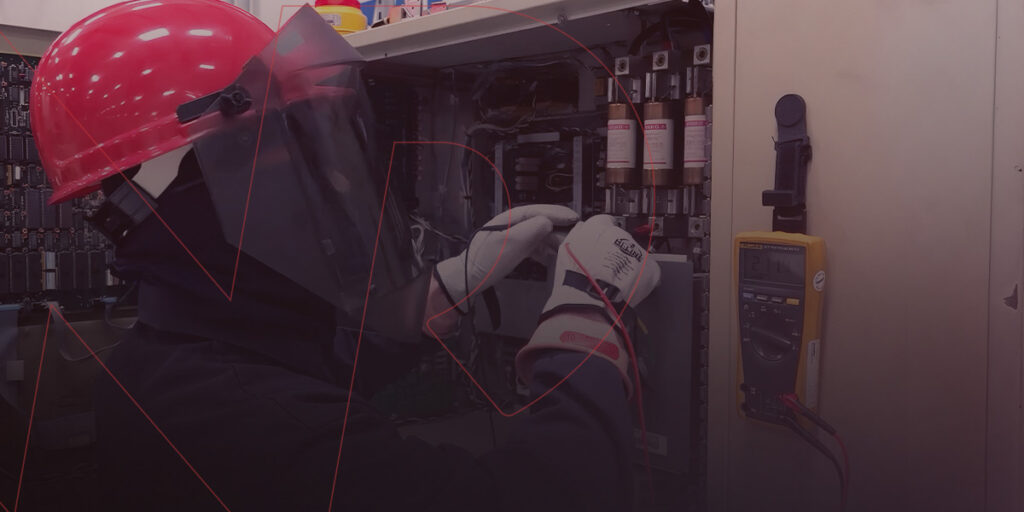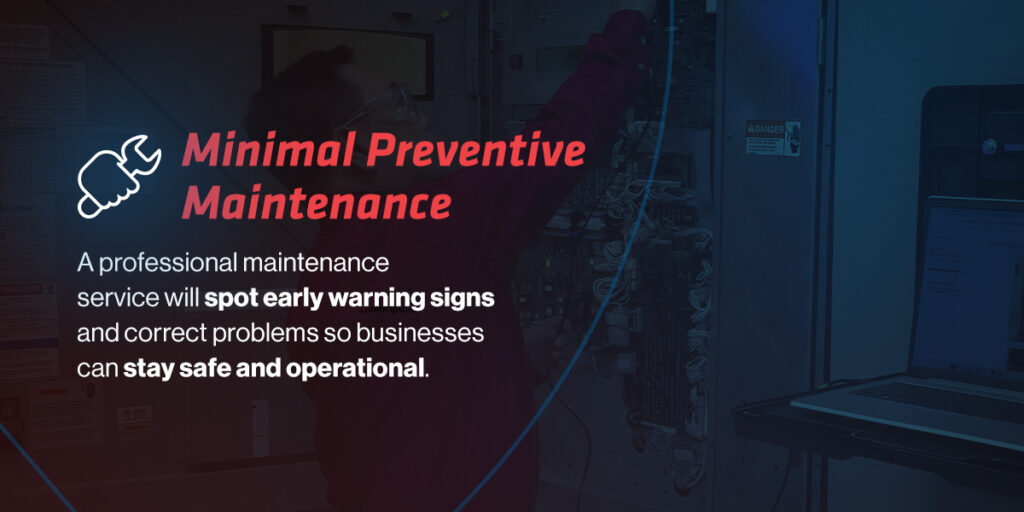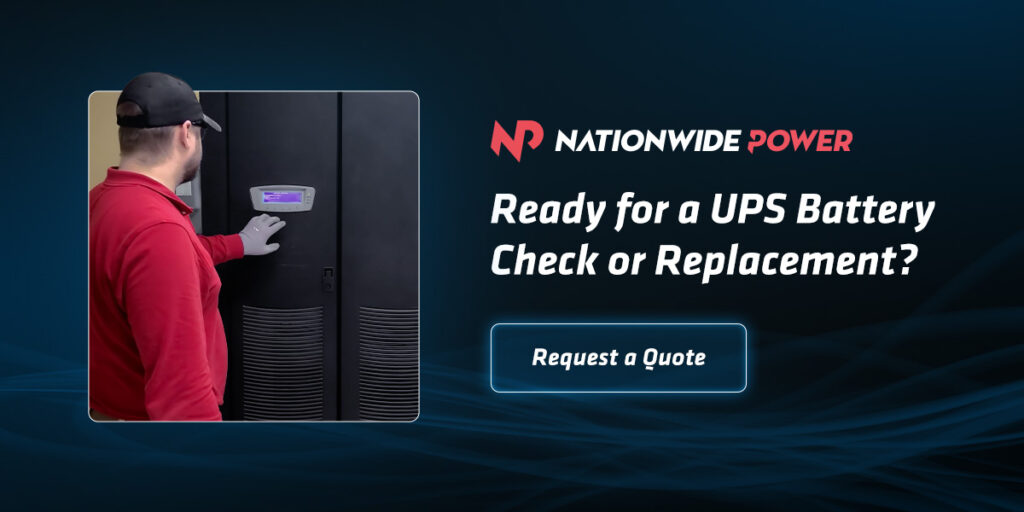

Your uninterruptible power supply (UPS) is critical to maintaining operations. When the power goes down or voltage fluctuates, it’s there to bridge the gap — but no matter the condition of the UPS, it needs well-maintained batteries to maintain power during emergencies.
When UPS batteries start to fail, you risk downtime, lost data, and damaged equipment. Whether you’re running a hospital, data center, or small business, knowing when to replace UPS batteries is critical to protecting operations.
Standard valve-regulated lead-acid (VRLA) UPS batteries last three to five years. However, the environment, loading, usage, and maintenance can all affect a battery’s useful life. The better you maintain your battery system, the longer it will last.
The UPS system’s lifespan depends on use, environment, maintenance, and in some cases, model. If your system is getting older, consider upgrading to a new one. Some new UPSs can operate at 92% to 95% efficiency when run at 100% capacity, with some reaching 99% efficiency.
If you’ve had your UPS batteries for a few years, it’s common to see some performance dips. Once these happen, it might mean your batteries are close to failure. Here are some warning signs so you know when to replace your UPS batteries:
UPSs will often tell you if something’s wrong. Loud beeping or flashing lights mean there might be a battery problem happening now, or the battery needs addressing soon. Some systems will send digital alerts when monitoring systems detect an issue.
If your UPS batteries are approaching their three to five-year mark, it’s time to start planning for a replacement. Even when they seem to be running perfectly, batteries naturally degrade over time. Businesses that use UPSs for critical operations, like hospitals need batteries they can count on at all times. Batteries in the three to five-year range likely need replacing soon.
Reduced battery runtime signals internal degradation. Batteries that fall below the manufacturer-rated amp-hour capacity are considered unreliable, and you should replace them as soon as possible.
Physical damage is a major warning sign. If you notice any of these issues, it’s time for immediate removal and replacement:
These are signs of internal failure, overheating, or overcharging. Left unchecked, damaged batteries can become a major safety hazard for your team and nearby equipment.
The entire point of a UPS is to keep your critical systems running without interruption during a power outage. If your servers or network gear go down during a power loss, it could be the UPS batteries. Check their connections and integrity — if everything looks good visually, the batteries have probably failed internally. Get them tested and replaced as needed before more unplanned downtime happens again.

Running a business can be busy — it’s easy to overlook preventive maintenance when your UPS system is working properly. But skipping regular preventive maintenance means you miss small problems that can turn into big nightmares. A professional maintenance service will spot early warning signs and correct issues so your company can stay safe and operational.
Noticing strange charging or voltage numbers? That’s a sign your UPS batteries might be close to failing. If the voltage drops under load or fluctuates outside expected parameters, the batteries could be sulfated, shorted, or suffering from one or multiple dead cells. Get them inspected to check their condition.
High heat will slowly kill your batteries. Battery life is cut in half for every 15 degrees Fahrenheit over 77. If your UPS is placed in a warm server room or equipment space, you could be shortening its battery life. Add cooling equipment or move batteries out of warm areas to protect them. Test batteries that have been stored in these conditions to avoid failure.
Operations with growing infrastructure may forget to upgrade their UPS solution as they scale. More systems and equipment mean more strain on the UPS batteries, and an increased load reduces runtime. The more strained your system is, the more prone it is to failure. Assess your UPS against your current needs — if it can’t keep up, it’s time for an upgrade. Consider either adding more batteries (strings/cabinets), or increasing the size of the batteries, if possible.
Now that you know the warning signs, how can you tell if your batteries are good? Regular testing and checks help you spot potential issues before they take down your system. Here are some checks you can do on your own:
If it’s time for battery replacements, there are options. If your UPS has insufficient runtimes, increasing the amp-hour capacity or adding a second cabinet can help support your load.
Always plan your battery replacements. Reactive replacements can shut down operations suddenly, leading to significant disruptions. Partner with a reliable distributor and power professionals who specialize in UPSs to schedule battery swaps during non-peak hours. This option minimizes disruptions and ensures the new batteries are properly installed and tested, while the old ones are responsibly recycled.
If you think your UPS batteries are showing signs of failure or you just want to schedule maintenance, Nationwide Power is your partner for keeping the lights on. From comprehensive UPS battery checks to complete replacements and proactive maintenance programs, our Critical Power Professionals™ are here to help. We have decades of experience across all major UPS brands.
At Nationwide Power, we strive to be the best. That means responsive support, no red tape, and real people on the phone. Nationwide Power builds its services around your needs, and we give clients access to a 24/7 emergency line. Request a quote for UPS battery services today!


